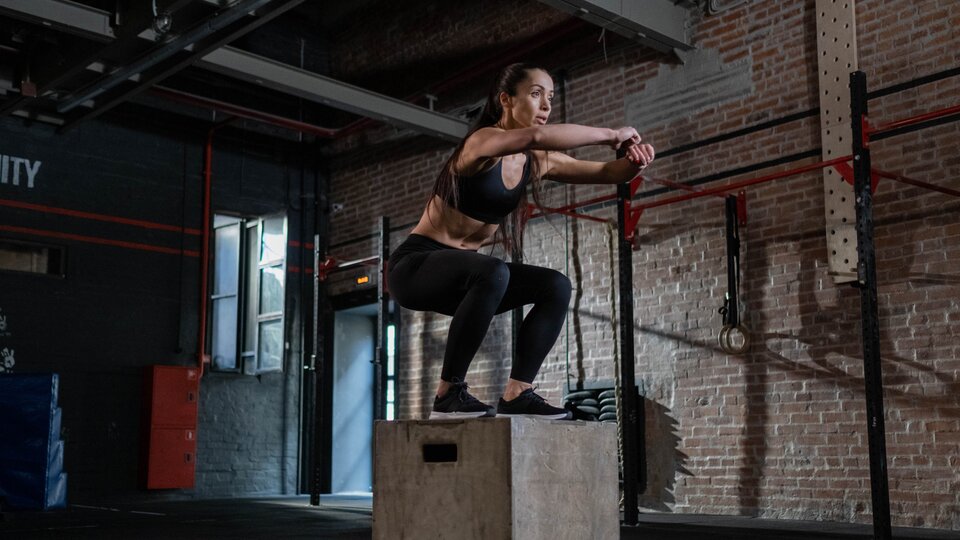Products You May Like
Whether you’re training for a race, an intramural league, or simply because you like to, improving muscular power can be a great addition to your workout regimen. First, jumping high and sprinting fast is cool. But really, adding training for power to your toolkit helps make you more resilient and versatile as a mover.
A great example of what happens when you don’t train for power: backyard football over the holidays. Inevitably, someone pulls a hamstring or throws out their back because on one day each year, they knock the dust off the jets and move quicker than they do the other 364.
In all seriousness, being prepared for sudden bursts of movement can make you a better performer in competition. It also can protect you when you lunge quickly to catch something from falling off a table or sub for your friend’s indoor soccer league.
Training for power is the practice of performing muscular contractions quickly. The intent is to condition your motor units to fire simultaneously, creating a powerful muscular contraction.
Let’s talk load
You’re probably familiar with the dozens of plyometric variations of bodyweight or near-bodyweight power. Box jumps, broad jumps, medicine ball throws, and so on. If these aren’t doing the trick for you, level up your power training and implement two things: loaded movements for speed and sprints. Here are some guidelines for where to start your power training:
-
Unloaded: bodyweight for sets of 1-5 reps. Examples: one five-yard sprint, three box jumps
-
Loaded plyos (jumps/throws): 10-30% bodyweight for a set of 1-5 reps. Examples: three dumbbell squat jumps, five medicine ball slams, three clap pushups.
-
Main lifts for speed: 60-75% body weight for sets of 1-5. Example: three speed back squats, five speed bench presses.
Now that you’ve picked out some exercises and figured out how to load them, let’s work them into your strength training:
-
Perform your power-based exercises near the beginning of your workouts. To optimize motor unit synchronization and muscular contractile power, it’s important that you’re not fatigued when doing your power-based exercises. Do this training right after your warm up. Though there’s a time and place to do these in a compromised state, the primary adaptation you’re looking for won’t occur.
-
Separate your repetitions. Perform each rep as its own. Maximally stand up, press, pull, or jump each and every rep, reset your stance or starting position, then do it again. A great way to think about this concept is, “perform one rep three times” rather than “a set of three reps”.
-
Take adequate rest in between sets. True power training not only relies on muscles not being fatigued or sore but also on your energy systems replenishing the substrates that the muscles require to do what you want them to do. Long story short, rest at least two to three minutes between sets.
Training for power can be a huge benefit to everyone’s movement health, regardless of their fitness goals. Even if implemented at the simplest levels, exposing your body to variable stimuli can better prepare for the expected and the spontaneous. So, get moving (quickly)!
